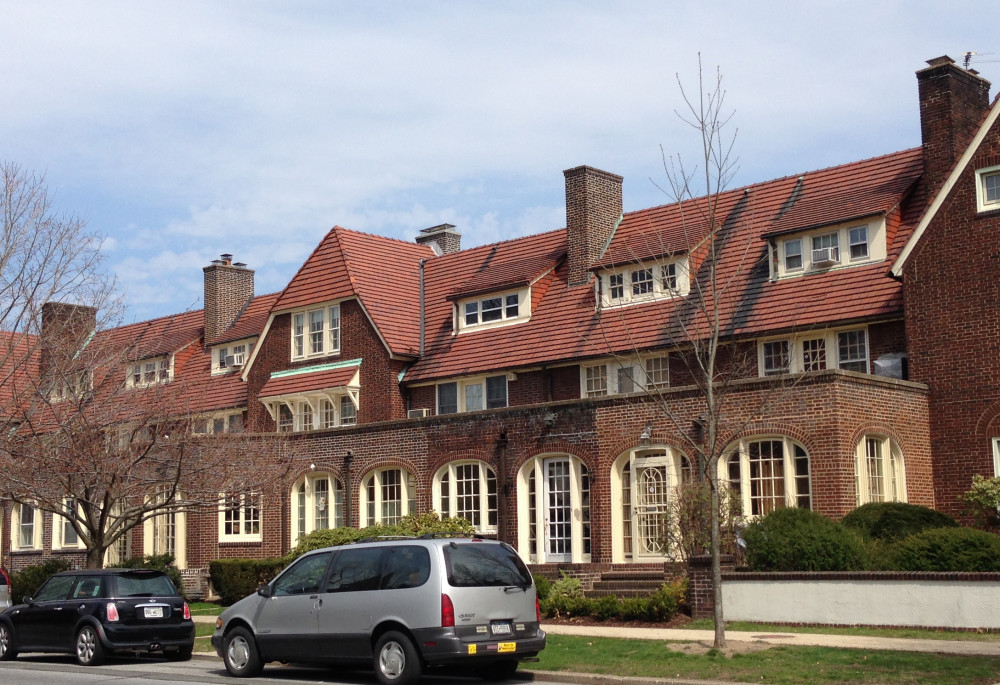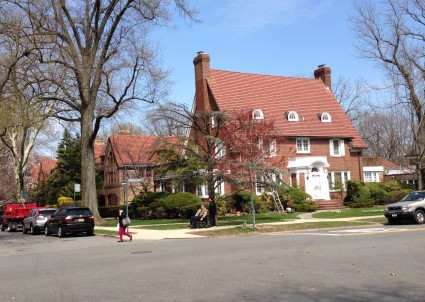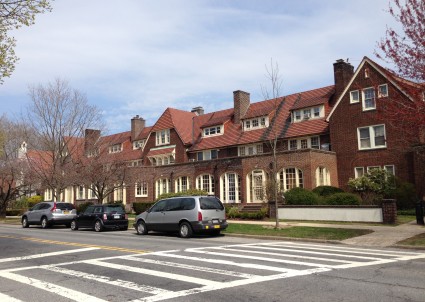Forest Hills Gardens
Grosvenor Atterbury and Frederick Law Olmsted, Jr.,
1912-13
One of the earliest planned garden communities in the country, Forest Hills Gardens was inspired by urban theorist Sir Ebenezer Howard’s Garden City Movement, which originated in England in 1898. The movement emphasized the confluence of natural surroundings within urban residential environments. It is believed that Forest Hills Gardens was specifically modeled after Hampstead Garden Suburb on the outskirts of London. The community’s winding tree-lined streets, English-inspired streetlamps and graceful architecture are the work of architect Grosvenor Atterbury and landscape architect Frederick Law Olmsted, Jr. Atterbury grew up in Long Island, studied architecture in New York and Paris, and in his early career apprenticed at the firm of McKim, Mead & White, specializing in summer homes and country estates. He was also interested in architecture for the working poor, designing a model tenement on East 31st Street in Manhattan. Thus, his experience and interests made him the perfect fit for Forest Hills Gardens, which was intended as a model community for people of diverse income levels. Unfortunately, the exorbitant constructions costs ultimately rendered the neighborhood less affordable than planned, and it remains a wealthy enclave to this day. Olmsted, Jr. was a famous landscape architect whose legendary father worked with Calvert Vaux to design Central and Prospect Parks, among many other commissions nationwide. Consisting of about 800 freestanding homes, townhouses and apartment buildings, the architecture can mostly be classified as neo-Georgian, American Arts and Crafts and neo-Tudor. In 1922, the Forest Hills Gardens Corporation was formed to manage the community’s affairs, including setting and overseeing design covenants. There are several small parks in Forest Hills Gardens, which are reserved for residents and their guests. These green spaces put the “Gardens” in Forest Hills Gardens, lending breathing space in which to relax and play, as well as providing vistas of the area’s beautiful architecture.


